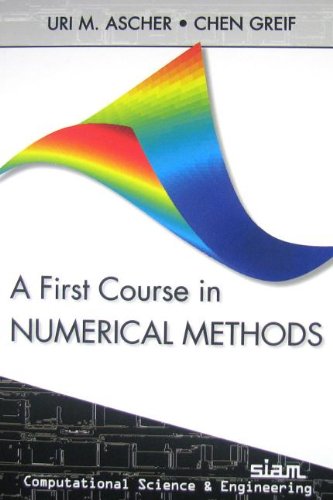

Most ebook files are in PDF format, so you can easily read them using various software such as Foxit Reader or directly on the Google Chrome browser.
Some ebook files are released by publishers in other formats such as .awz, .mobi, .epub, .fb2, etc. You may need to install specific software to read these formats on mobile/PC, such as Calibre.
Please read the tutorial at this link: https://ebookbell.com/faq
We offer FREE conversion to the popular formats you request; however, this may take some time. Therefore, right after payment, please email us, and we will try to provide the service as quickly as possible.
For some exceptional file formats or broken links (if any), please refrain from opening any disputes. Instead, email us first, and we will try to assist within a maximum of 6 hours.
EbookBell Team

4.4
42 reviewsThe authors focus on current methods, issues and software while providing a comprehensive theoretical foundation, enabling those who need to apply the techniques to successfully design solutions to nonstandard problems. The book also illustrates algorithms using the programming environment of MATLAB(r), with the expectation that the reader will gradually become proficient in it while learning the material covered in the book. A variety of exercises are provided within each chapter along with review questions aimed at self-testing.
The book takes an algorithmic approach, focusing on techniques that have a high level of applicability to engineering, computer science, and industrial mathematics.
Audience: A First Course in Numerical Methods is aimed at undergraduate and beginning graduate students. It may also be appropriate for researchers whose main area of expertise is not scientific computing and who are interested in learning the basic concepts of the field.
Contents: Chapter One: Numerical Algorithms; Chapter Two: Roundoff Errors; Chapter Three: Nonlinear Equations in One Variable; Chapter Four: Linear Algebra Background; Chapter Five: Linear Systems: Direct Methods; Chapter Six: Linear Least Squares Problems; Chapter Seven: Linear Systems: Iterative Methods; Chapter Eight: Eigenvalues and Singular Values; Chapter Nine: Nonlinear Systems and Optimization; Chapter Ten: Polynomial Interpolation; Chapter Eleven: Piecewise Polynomial Interpolation; Chapter Twelve: Best Approximation; Chapter Thirteen: Fourier Transform; Chapter Fourteen: Numerical Differentiation; Chapter